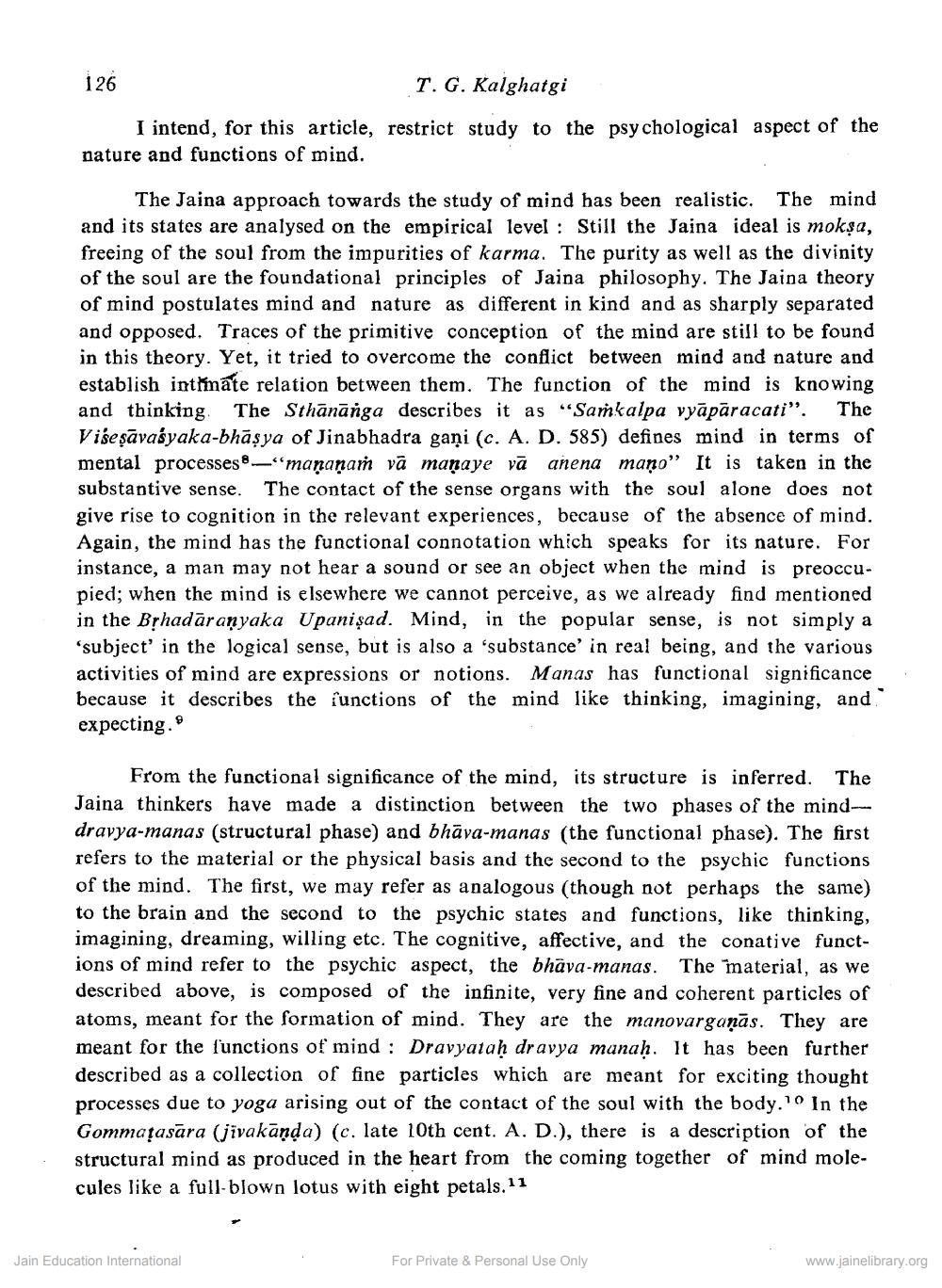Book Title: Concept of Mind in Jainism Author(s): T G Kalghatgi Publisher: Z_Aspect_of_Jainology_Part_3_Pundit_Dalsukh_Malvaniya_012017.pdf View full book textPage 2
________________ T. G. Kalghatgi I intend, for this article, restrict study to the psychological aspect of the nature and functions of mind. 126 The Jaina approach towards the study of mind has been realistic. The mind and its states are analysed on the empirical level: Still the Jaina ideal is mokṣa, freeing of the soul from the impurities of karma. The purity as well as the divinity of the soul are the foundational principles of Jaina philosophy. The Jaina theory of mind postulates mind and nature as different in kind and as sharply separated and opposed. Traces of the primitive conception of the mind are still to be found in this theory. Yet, it tried to overcome the conflict between mind and nature and establish intimate relation between them. The function of the mind is knowing and thinking. The Sthananga describes it as "Samkalpa vyāpāracati". The Viseṣāvasyaka-bhāṣya of Jinabhadra gani (c. A. D. 585) defines mind in terms of mental processes-"maṇaṇaṁ vā maṇaye va anena mano" It is taken in the substantive sense. The contact of the sense organs with the soul alone does not give rise to cognition in the relevant experiences, because of the absence of mind. Again, the mind has the functional connotation which speaks for its nature. For instance, a man may not hear a sound or see an object when the mind is preoccupied; when the mind is elsewhere we cannot perceive, as we already find mentioned in the Bṛhadaranyaka Upanisad. Mind, in the popular sense, is not simply a 'subject' in the logical sense, but is also a 'substance' in real being, and the various activities of mind are expressions or notions. Manas has functional significance because it describes the functions of the mind like thinking, imagining, and expecting." From the functional significance of the mind, its structure is inferred. The Jaina thinkers have made a distinction between the two phases of the minddravya-manas (structural phase) and bhāva-manas (the functional phase). The first refers to the material or the physical basis and the second to the psychic functions. of the mind. The first, we may refer as analogous (though not perhaps the same). to the brain and the second to the psychic states and functions, like thinking, imagining, dreaming, willing etc. The cognitive, affective, and the conative functions of mind refer to the psychic aspect, the bhäva-manas. The material, as we described above, is composed of the infinite, very fine and coherent particles of atoms, meant for the formation of mind. They are the manovarganas. They are meant for the functions of mind: Dravyataḥ dravya manaḥ. It has been further described as a collection of fine particles which are meant for exciting thought processes due to yoga arising out of the contact of the soul with the body.10 In the Gommațasara (jivakāṇḍa) (c. late 10th cent. A. D.), there is a description of the structural mind as produced in the heart from the coming together of mind molecules like a full-blown lotus with eight petals. 11 Jain Education International For Private & Personal Use Only www.jainelibrary.orgPage Navigation
1 2 3 4 5 6
